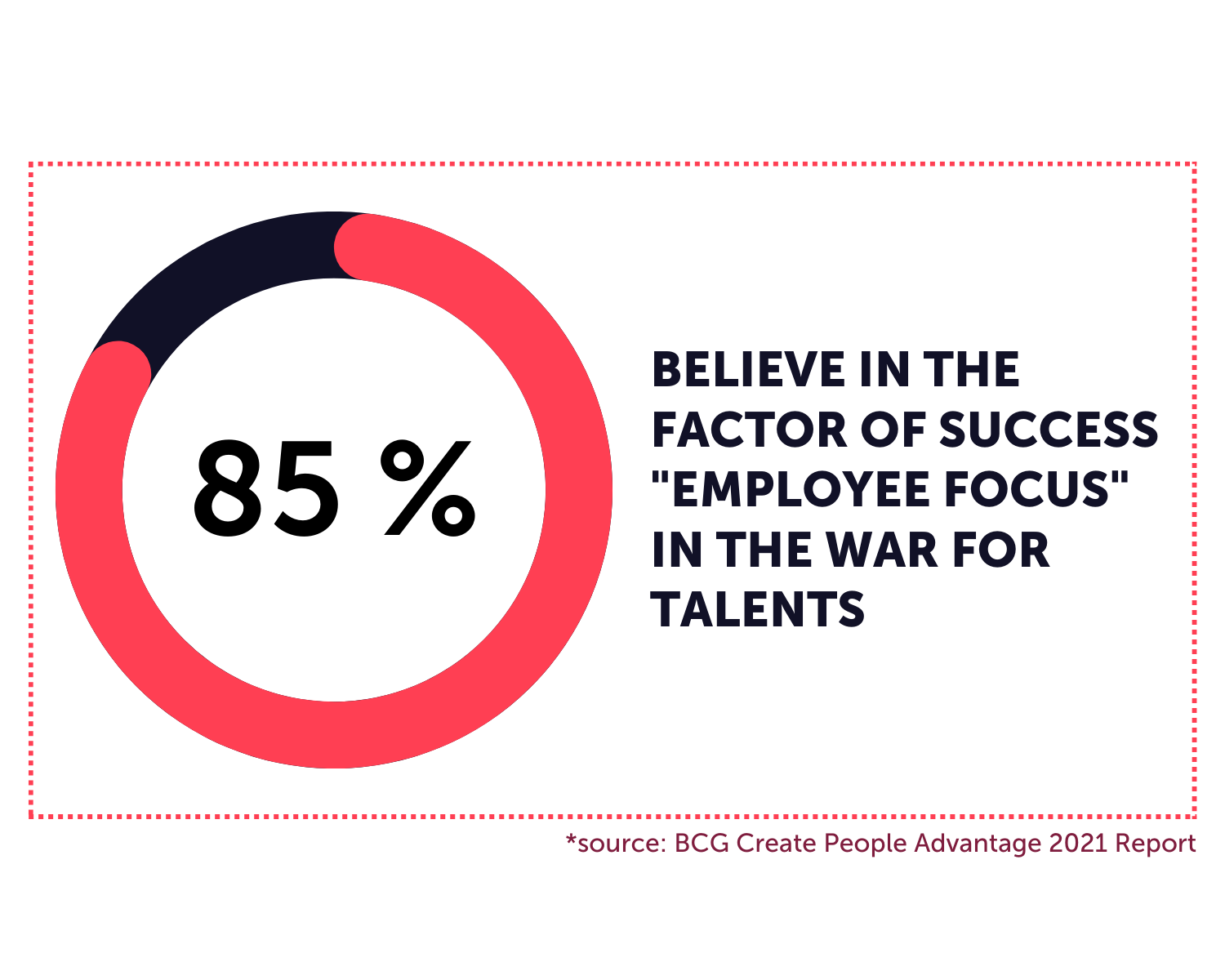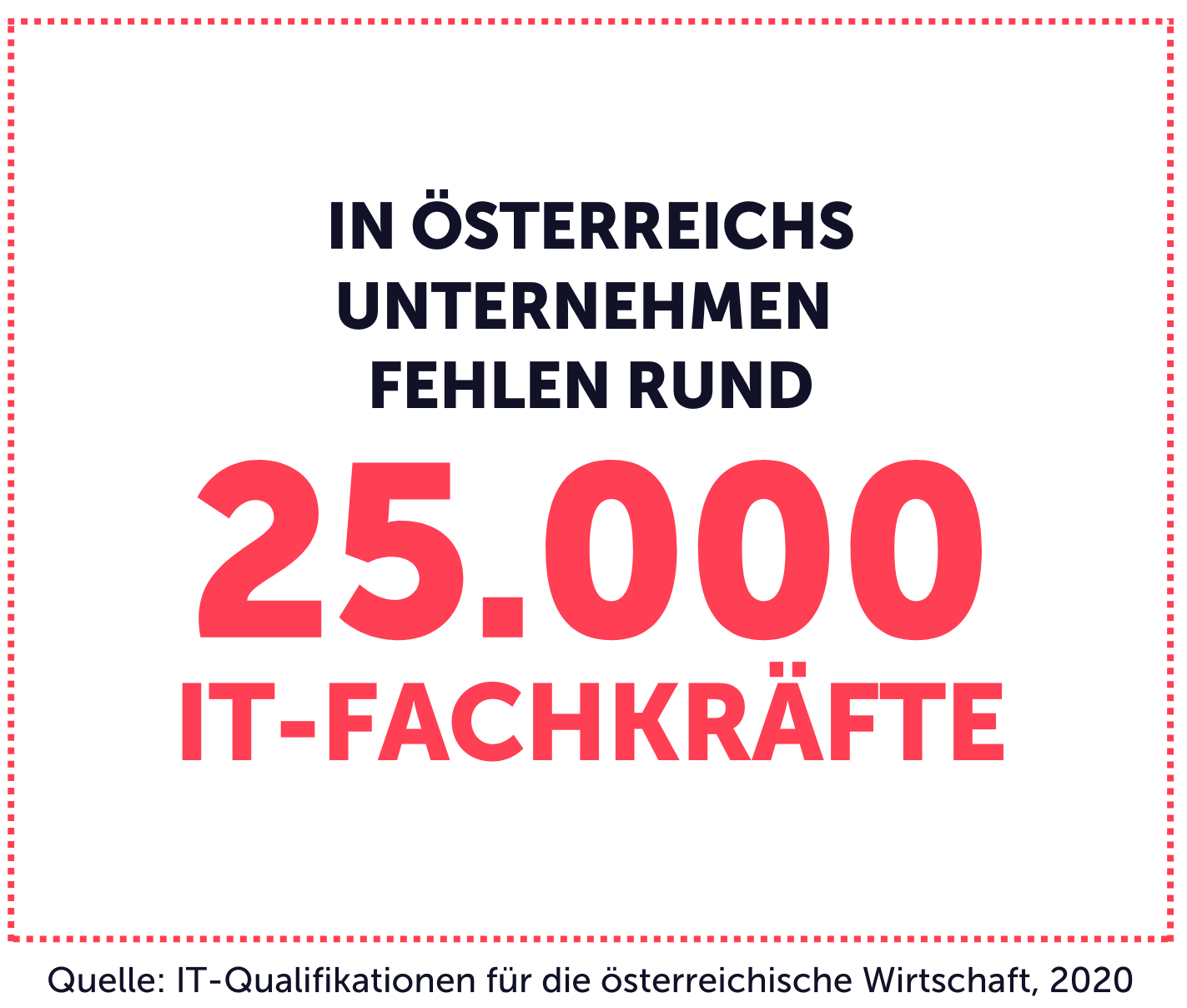
Employee Centricity: Focus on employees
In 2022, the job market will be determined by the candidates, i.e. applicants can now choose which company they want to work for. "Post & pray", i.e. advertising vacancies and waiting for feedback, was yesterday.
In addition, the focus is increasingly on employees. This also includes potential applicants who come into contact with a company at various touchpoints - keyword "employee centricity".
The Create People Advantage 2021 Report by the renowned Boston Consulting Group shows that employee orientation and "people management" are becoming increasingly important. In the survey, 85% of respondents said that focusing on employee needs and expectations is the key success factor in the competition for talent—the highest level of consensus in the entire study.
People management begins - as the name suggests - with the first contact with a future employee. This takes place at the latest at the beginning of the employee lifecycle during recruiting.
Post & Pray is definitely over
In order to even get into the position of being able to talk to applicants, recruiters have to create an attractive employer brand and inspire people for the company. The first touchpoints along the employee journey are no longer random. Post & Pray is over - passive becomes active.
This overarching trend brings with it various small, exciting approaches. Recruiting via social media is the best known: headhunters actively search for candidates who fit the job profile via platforms such as LinkedIn, but also Facebook, WhatsApp or Instagram. The term active sourcing is often used in this context. Similar to social recruiting, employees are actively sought. Among other things, CV databases are used that make large amounts of applicant data accessible for a fee.
For many companies, however, active sourcing is a resource hog, because the search for suitable candidates is time-consuming and causes high personnel costs. In addition, small companies in particular often lack the knowledge of how to approach candidates professionally.
Does this sound familiar to you? Then let us support you! Benefit from our close-knit candidate network and dedicate yourself to your core business while we find the right experts and specialists for your company.
Another trend is performance recruiting. Here, recruiters act in a similar way to B2C marketing and address a target group holistically. Is wastage inevitable? Not quite: smart targeting ensures that the right target group is addressed with the right words, images and videos. As in marketing, the content is geared to the needs and pain points of the target group.
Video first
Especially in social recruiting, a lot works via moving images. "A picture is worth a thousand words" - the saying is as old as time, but it is also true in recruiting. The umpteenth written job advertisement, whether online or offline, is no longer enough to sweep an applicant off his or her feet.
Text out, video in - why not? Recruiting videos are becoming more and more important. More emotions can be conveyed through images, and at the same time the success of TikTok shows which content format keeps users glued to their screens.
With a video shoot, you can present your company in an authentic way, show everyday situations and let both superiors and employees speak. The important thing is: no actors and no imposed, unreal scripts! Authenticity wins.
Diversity and inclusion: no longer a "nice-to-have"
Honesty and authenticity are other keywords for the next recruiting trend. While until a few years ago, diversity and inclusion were secondary issues for applicants, the tide has now turned.
Today, potential employees expect an open company that represents their values, is ready for new things and does not exclude anyone. Here, too, it is important to be honest: Using pictures of various groups of people in recruiting, none of whom work in the company? A no-go.
Diversity and inclusion can only be promoted if they are actually practiced within the organisation. Barrier-free access or "language level A2" - this means that a company is also open to people who do not speak a language perfectly - are points that applicants perceive positively in job advertisements or recruiting videos.

Recruiting goes international – if at all
There are many recruiting trends - but one of them seems at first glance as if it had mistakenly found its way into the numerous lists. We are talking about the trend of not recruiting. You have read correctly: Recruiting costs are going through the roof - a factor that should not be underestimated in view of the fact that the length of employment is tending to become shorter and shorter.
In order to convince Generation Y and Z employees to stay with the company as long as possible, employee retention is becoming an increasingly important issue. "Retention first" is the magic phrase here.
It's also clear that this doesn't always work out, or that dozens of new employees are often desperately sought. At the same time, looking abroad is becoming increasingly interesting for recruiters. A study by the Institute of Industrial Sciences has determined that there is a shortage of around 25,000 skilled workers in the booming IT sector in Austria.
It is difficult to fill these positions regionally to nationally. So why not look beyond national borders? Internationals bring - despite the higher effort in recruiting - different perspectives and casually contribute to a more diverse community.
By the way, we at Schulmeister are very familiar with all these challenges - because the search for qualified employees in IT is our daily business. We will find the best IT experts for your company within a short time - want to bet?
Recruiters in a responsible role
With all the recruiting trends mentioned above, it is true that recruiters are becoming more and more involved in the external image of a company. Applicants scrutinise their counterparts very closely during interviews and meetings and weigh up whether the organisation suits them or not.
The recruiter plays a sales role. Despite standardisation and digitalisation, there are numerous personal conversations between the two "parties". Recruiters then have to convince their new potential colleagues - in the past it was the other way round.
Diverse recruiting trends
Recruiting 2.0, 3.0 or 4.0: there are numerous terms for the developments of new approaches that have grown in recent years, becoming more and more established and taking the place of the usual. Lip service to diversity and equality is no longer enough, and at the same time recruiting is becoming more and more active.
Whatever you want to call current recruiting trends, they are changing the work of recruiters noticeably. Without taking into account new media, new channels and a stronger focus on the needs of applicants, your recruiting will no longer be successful today.



